- News
- Reviews
- Bikes
- Components
- Bar tape & grips
- Bottom brackets
- Brake & gear cables
- Brake & STI levers
- Brake pads & spares
- Brakes
- Cassettes & freewheels
- Chains
- Chainsets & chainrings
- Derailleurs - front
- Derailleurs - rear
- Forks
- Gear levers & shifters
- Groupsets
- Handlebars & extensions
- Headsets
- Hubs
- Inner tubes
- Pedals
- Quick releases & skewers
- Saddles
- Seatposts
- Stems
- Wheels
- Tyres
- Tubeless valves
- Accessories
- Accessories - misc
- Computer mounts
- Bags
- Bar ends
- Bike bags & cases
- Bottle cages
- Bottles
- Cameras
- Car racks
- Child seats
- Computers
- Glasses
- GPS units
- Helmets
- Lights - front
- Lights - rear
- Lights - sets
- Locks
- Mirrors
- Mudguards
- Racks
- Pumps & CO2 inflators
- Puncture kits
- Reflectives
- Smart watches
- Stands and racks
- Trailers
- Clothing
- Health, fitness and nutrition
- Tools and workshop
- Miscellaneous
- Buyers Guides
- Features
- Forum
- Recommends
- Podcast
Have ‘climbing bikes' had their day? An aero vs lightweight road bike efficiency test
This article includes paid promotion on behalf of Orbea
Aero road bikes are getting more refined by the day, but does this mean they pose an existential threat to the classic lines of the climbing/lightweight road bike? To find out, we donned our science caps and set out to see if an aero bike really compromises more than just weight...
Just a decade or so ago, owning an aero bike was a bit like owning an American muscle car. They looked cool, and in a short drag race they were undoubtedly very fast, but aero bikes of old were a lot less fun if you wanted to go around a corner. Or up a hill, or actually own one…
These days though, aero bikes are quite a bit more refined and much easier to live with. Take the Orbea Orca Aero, for example. It weighs less than eight kilograms, it handles just like a performance bike should, and it’s comfortable enough for riders like Arnaud de Lie to ride it for 3,498km around France.
Which leaves us asking: are lightweight climbing bikes still relevant in 2024, or have aero bikes well and truly taken over? To help us answer that question, we headed off to Silverstone Sports Engineering with its plethora of testing rigs, and Orbea let us loose with the bike that they call "the ultimate climbing machine", the latest Orca. Let's go and do some testing!
There's more to lightweight bikes than being light
Weight is easy to measure, and arguably talked about a little bit too much in the world of cycling. That’s probably why a lot of people think it’s the only reason why you might want to own a climbing bike like the Orca, over an aero bike like the Orca Aero.
However, I think there’s more to it than that. You see, as clever as Orbea’s engineers are, I think that just like everyone else they’re going to have had to compromise in certain areas to make the Orca Aero all pally with the wind.
These compromises aren't always the most talked about though, as things like ride feel, power transfer and pedalling efficiency are really rather tricky to measure.
What we need is some hard and fast data, comparing an aero bike with a climbing bike, to find out the real reason why so many pros still crave bikes like this…
Efficiency is key
Let's for a moment imagine that the aero bike weighed exactly the same as the climbing bike. On the flat you would of course expect the aero bike to be faster, but what about on a climb? Would those aero-profiled tubes result in less efficiency?
To find out, we commandeered Silverstone Sports Engineering's pedalling efficiency rig. I was tasked with riding at a set wattage on both bikes over two different surfaces, and then all the clever tech behind the scenes would calculate the difference between how many watts I put in and how much of that effort went into propelling me forwards.
To keep things fair, both bikes were fitted with exactly the same crankset, chain and cassette, and the wheels, tyres and tyre pressures would also be kept exactly the same.
Has the development of climbing bikes flatlined?
To see what the future might hold, it's sometimes useful to look to the past - and for as long as there’s been bike racing, it’s been lightweight bikes that have ruled the roost.
Just take a look at the Orcas’ lineage. Orca bikes have racked up 22 World Tour wins, and countless more results under a certain Sami Sanchez. Orca riders have been victorious on the Alp d’Huez, the Zoncolan and Luz Ardiden. Basically, if there’s a mountain worth winning on, then an Orca rider has probably done it.
It’s no longer enough to just be light, though. Pro riders and teams are more demanding than ever when it comes to aerodynamics, weight, stiffness and compliance of their bikes. When Orbea announced that it would be returning to the Tour de France in 2024, it equipped the Lotto–Dstny team with two bikes for road stages, the Orca and the Orca Aero.
Obviously, the Orca climbing bike is a bit lighter than the Orca Aero, and this is indeed one of the reasons that the pros choose to ride it. However, like all the bikes in the Tour de France it’s constrained by the UCI weight limit, so there’s not a lot of wiggle room for improvement in this area.
In fact, despite the Orca OMX frame weighing a very competitive 750 grams, and the lightest builds weighing less than the UCI weight limit, it’s only around 50 grams lighter than the final rim brake Orca from years back.
Has the development of climbing bikes flatlined then? According to Orbea, no!
This latest Orca has been designed to be a lot more than just light. In Orbea's words: "Having the lightest bike is worth nothing if it isn’t stiff and efficient."
Orbea also explain that the rounder frame sections help reduce vibrations, hence saving energy on longer rides and offering you a further advantage on that final climb. How much energy might you save? Let’s find out…
Results
We’ve had some time to mull over the results... and the good news is that exactly the same thing happened every time we ran the test, so we’re pretty confident about our findings.
We’ll kick off with the graph below. The blue bars represent the Orca Aero bike, and the grey bars represent the Orca climbing bike. This graph shows the overall efficiency of the bikes, and therefore the higher the bar, the better.
Now, we should point out that both bikes actually performed extremely well. We didn’t mess around optimising our tyre pressures for the separate surfaces or wax the chain, we just used the bikes as you might actually ride one out on the Sunday club run.
If you look closely though, despite using the same chain, crankset, wheel, tyre and tyre pressures, we found a measurable and very repeatable difference between the two bikes.
In fact, the Orca climbing bike was more efficient both on the simulated tarmac, the simulated rough road and at both 30kph and 40kph. This difference admittedly isn’t huge, varying between about 1% and 3%, which isn’t going to create any huge gaps between you and your mates when out riding. It could well leave you feeling fresher and less beaten up at the end of an endurance ride or long race, though.
Our next graph shows us the power loss, or in other words, the difference between the power I put in and the power actually propelling me forward. Once again the blue bar is for the Orca Aero and the grey bar is for the climbing bike. This time though, we’re looking for the lowest possible number. As you can see, the lightweight Orca once again takes the win.
Our testing shows that whether you’re riding on a smooth road or rough road, you can expect to save around 3 watts by switching from an aero bike to a climbing bike. Clearly the pros are unlikely to give up their speed machines for 3 watts, but for the rest of us, it’s certainly worth thinking about.
So where are these watts going? Well as you ride along it’s impossible for all of your effort to go into forward motion. Any noise that your tyre makes on the road or that your drivetrain makes is energy being dissipated. Your tyre will also heat up as it soaks up vibrations, which is also energy being lost.
Clearly, there’s also a part that your frame is responsible for too. As I turn the pedals, you need not only a stiff frame to translate this force to the wheel, but also a compliant one to soak up the vibrations being transferred from the road through the bike.
Having an aero frame is great for cheating the wind, but the long thin tube shapes mean that they’re less good at absorbing these vibrations. Read any of our reviews, and you’ll soon see that even the best modern aero bikes are less comfortable than their climbing counterparts. And now we know that when it comes to pedalling efficiency they have to make compromises too!
If there’s one takeaway from this, it’s that there’s a lot more to a climbing bike than just climbing...
Conclusion
We’ve actually been riding both of these bikes for quite a few weeks now, in the real world and not just in labs. While for a flat race it’s the Orca Aero that I would choose, I’ve found myself more often than not reaching for the climbing bike for everything else.
The feeling of a bike that is both light and efficient is infectious, and the instant acceleration from slow speeds is something that not many aero bikes can pull off. Throw in the vibration absorption, which is gladly received on B roads (plus most other UK roads for that matter) and responsive handling, and you not only do you have a serious climbing machine, but a true all-rounder.
Coming back to our original question then: are climbing bikes a dying breed? No, I don’t think so one bit, and now we’ve got the data to back it up.
The weight of climbing bikes may not have changed a huge amount over the last decade, and the advancements are far less tangible than in the past - but this doesn’t mean that it’s stagnated. Brands can no longer get away with just saying "it’s 100 grams lighter”, but there is still very much a place for bikes that don’t have aerodynamics as their absolute number one priority.
For more information on either the Orca or Orca Aero, visit orbea.com. Let us know whether you'd rather an aero bike or a climbing bike in the comments below.
Jamie has been riding bikes since a tender age but really caught the bug for racing and reviewing whilst studying towards a master's in Mechanical engineering at Swansea University. Having graduated, he decided he really quite liked working with bikes and is now a full-time addition to the road.cc team. When not writing about tech news or working on the Youtube channel, you can still find him racing local crits trying to cling on to his cat 2 licence...and missing every break going...
Latest Comments
- brooksby 11 min 26 sec ago
She had demonstrably caused serious injury so that's not up for debate (or shouldn't be)....
- Surreyrider 21 min 57 sec ago
I've tried Lakes in shops and they always seem to have a high volume, meaning a lot of space above my foot.
- chrisonabike 48 min 45 sec ago
Inescapable now it seems. On road.cc, on Cycling UK - they were even DJ'ing on drum and bass on a bike recently....
- Bill H 1 hour 27 sec ago
The attitude of the police is wearily familiar. I passed through Roubaix several times when staying in Lille. For all the town's rich industrial...
- BikingBud 1 hour 11 min ago
Yup - Rivermind! ****SPOILER ALERT***** https://www.radiotimes.com/tv/sci-fi/black-mirror-common-people-ending-e...
- lesterama 2 hours 13 min ago
A friend told me that Gravaa doesn't work with inserts. Visma actually glued their tubeless tyres on to avoid tyre detachments! Sounds like a...
- Velophaart_95 2 hours 32 min ago
That was my first thought when I saw, and read it........
- qwerty360 2 hours 40 min ago
My understanding was traffic data also suggests that its actually made driving quicker not slower in Paris....
- mitsky 4 hours 4 min ago
"... struck by a driver..." http://rc-rg.com

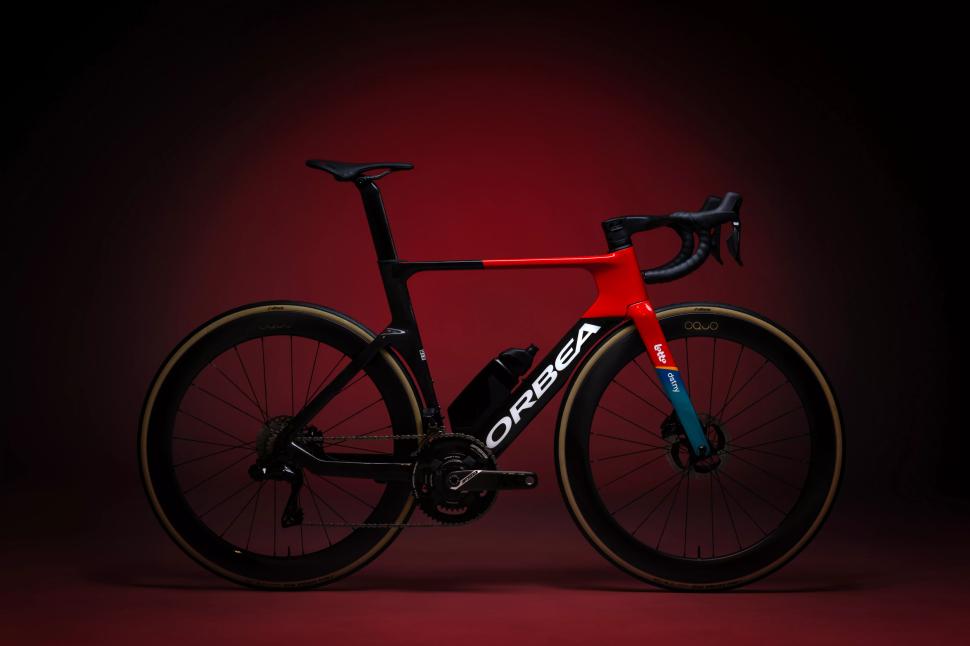
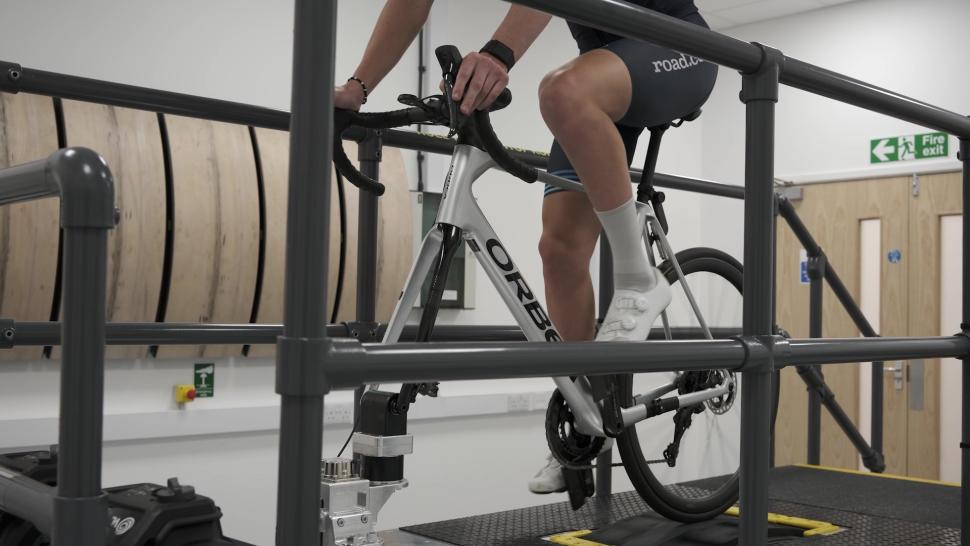
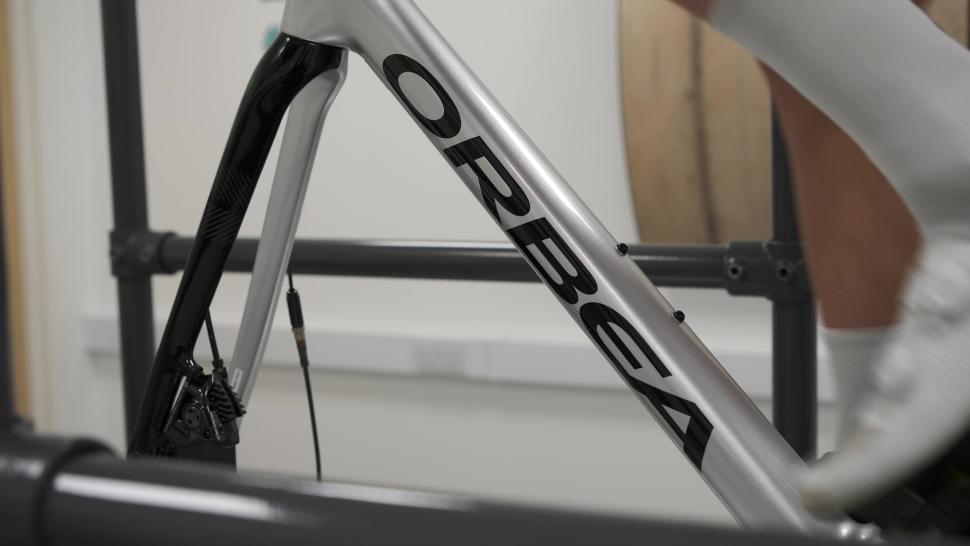

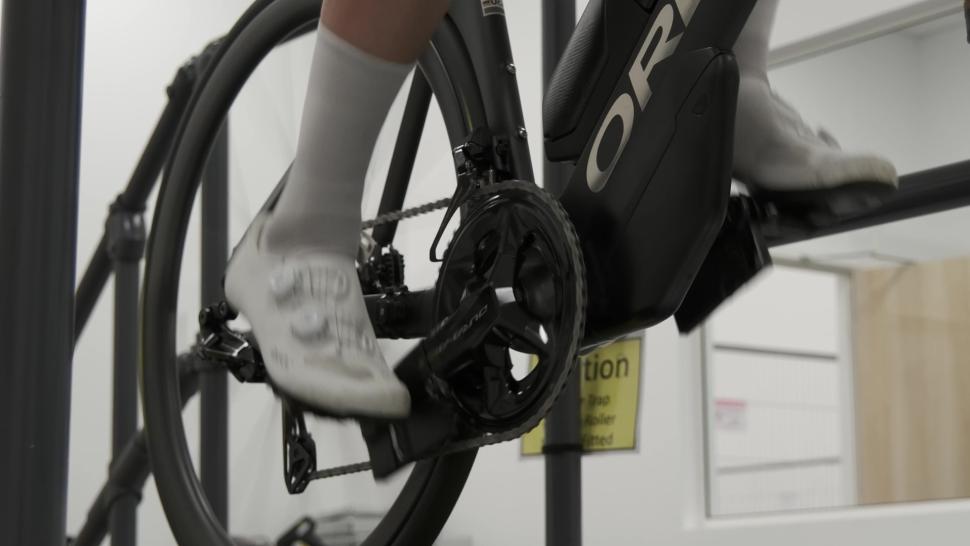
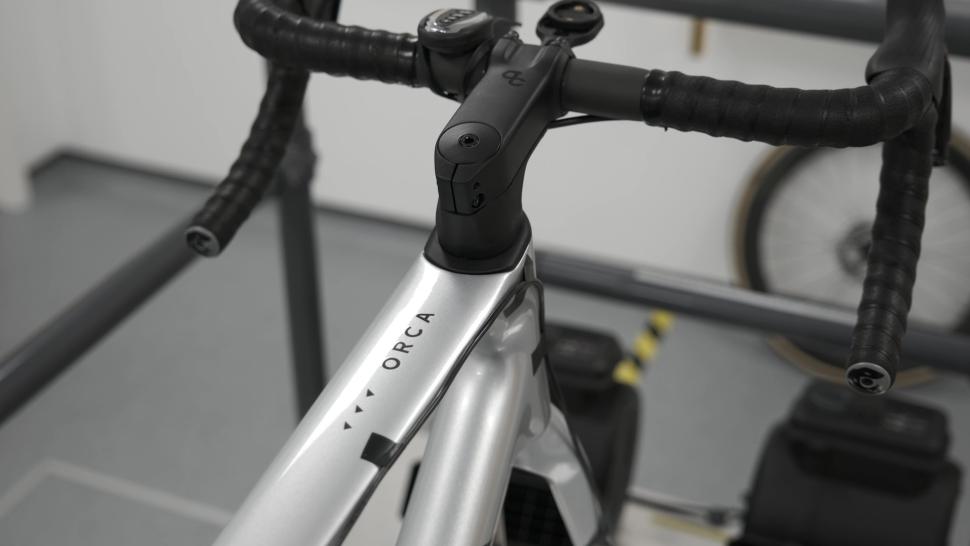
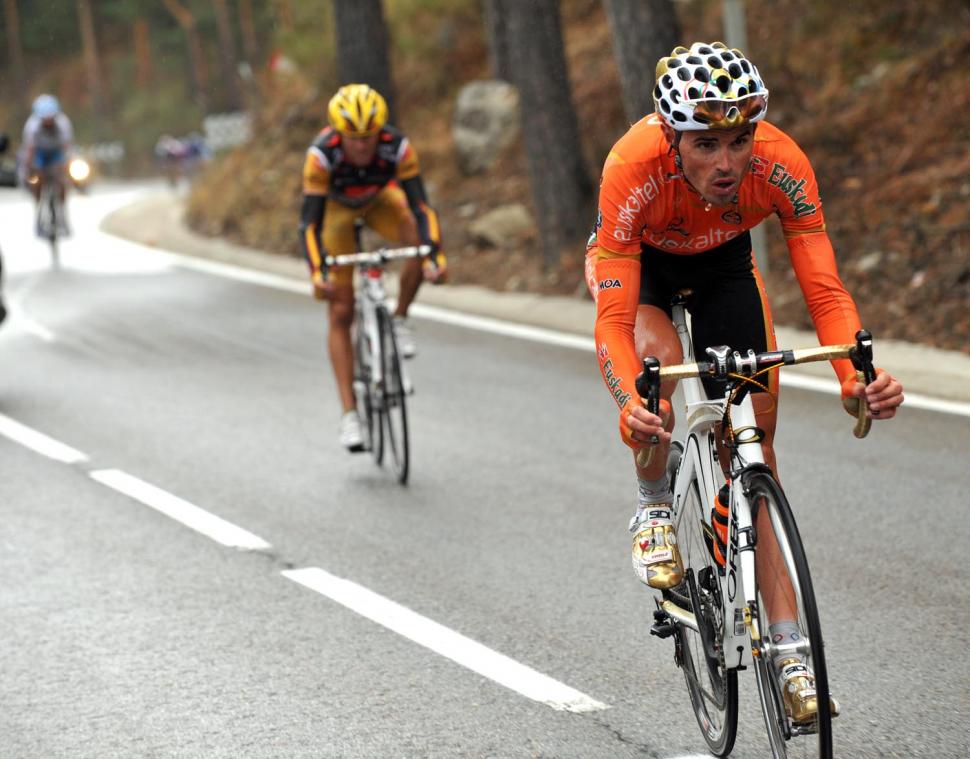
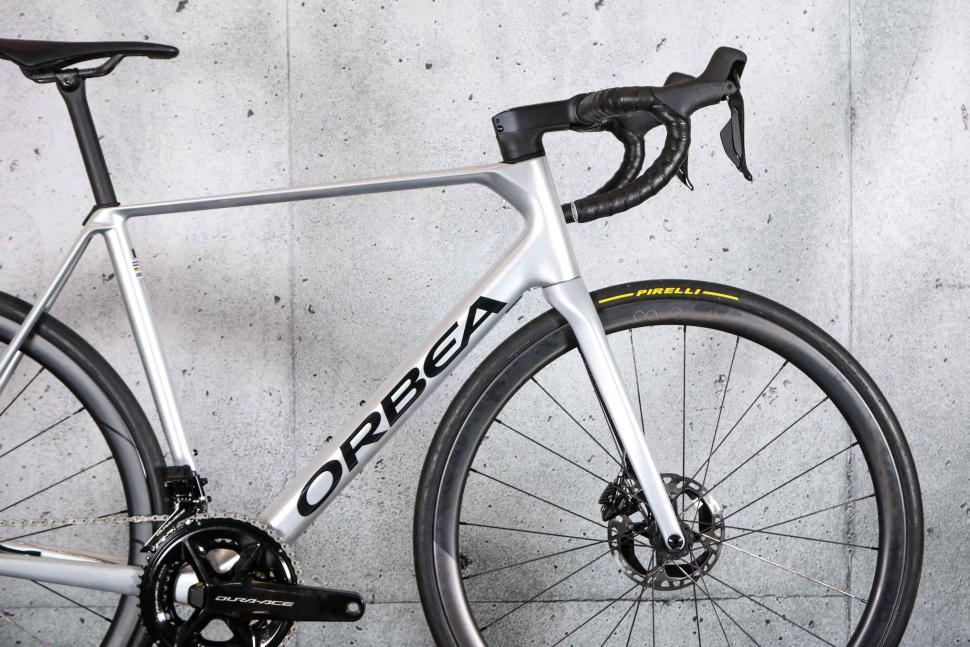

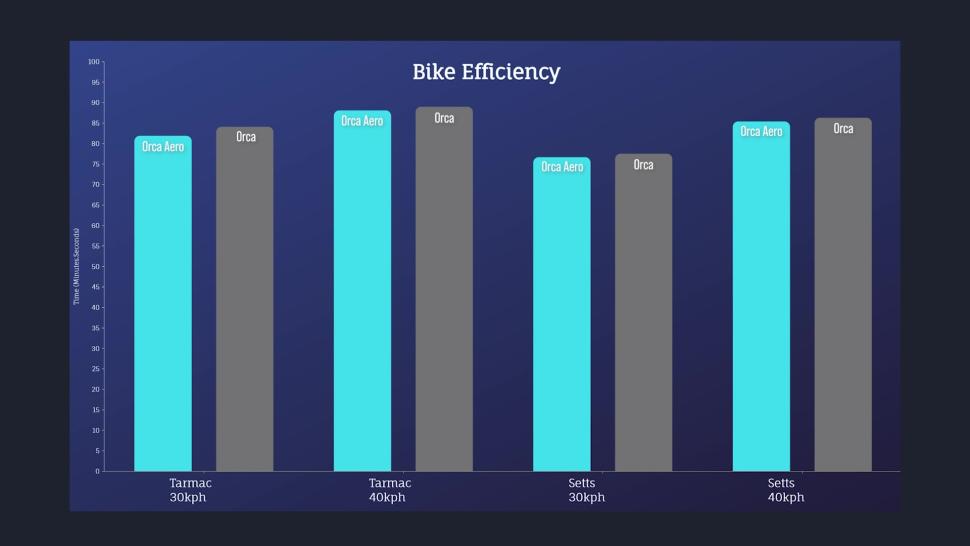


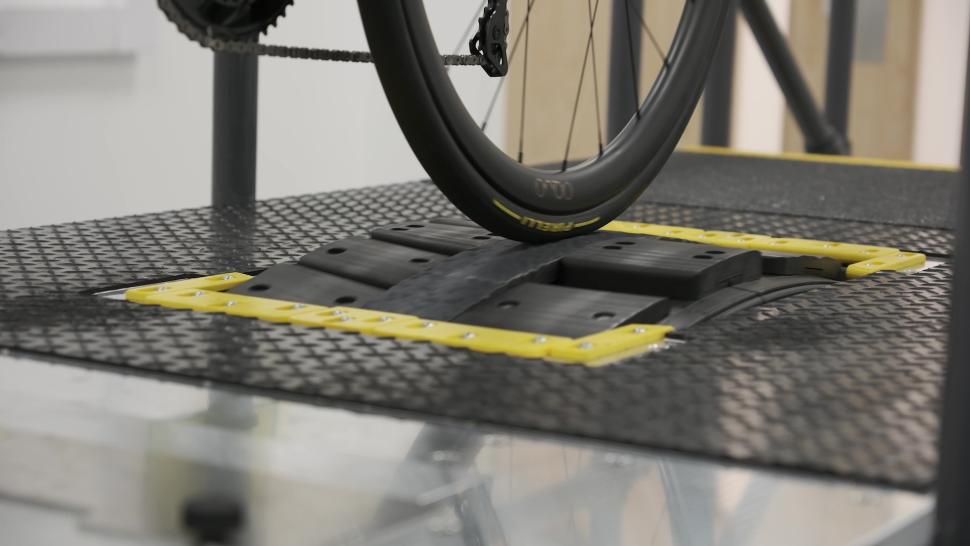
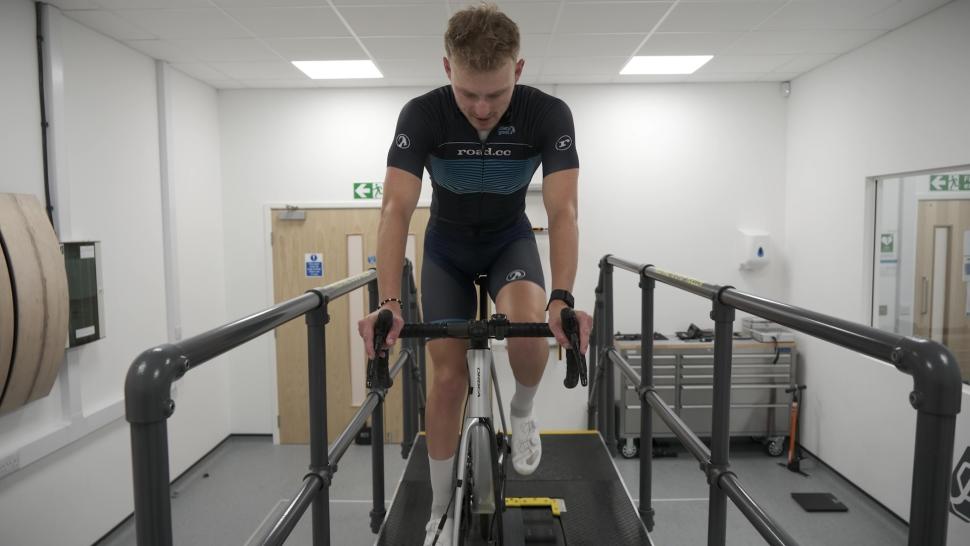
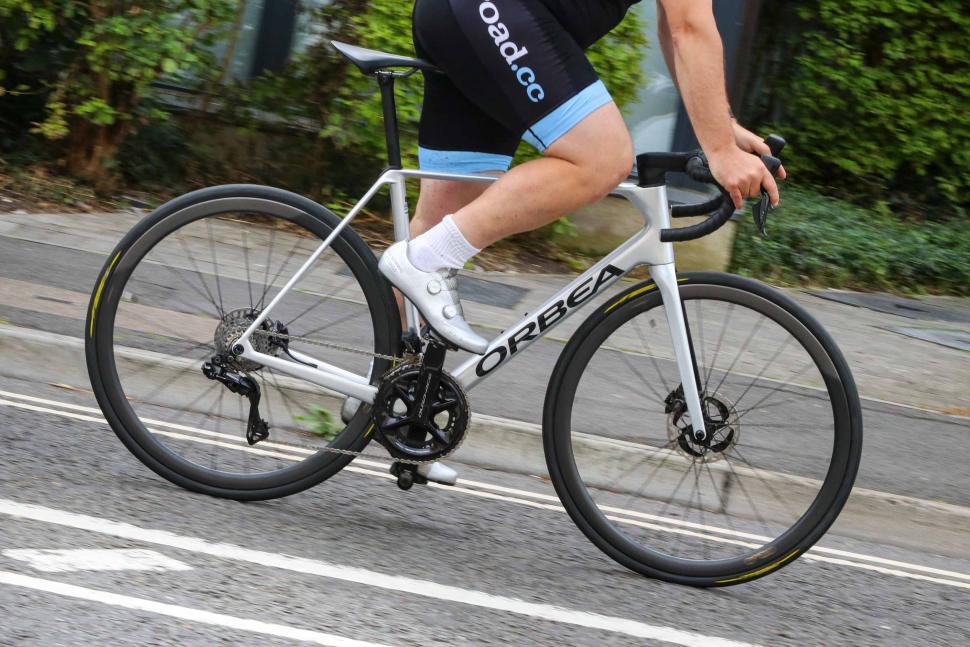

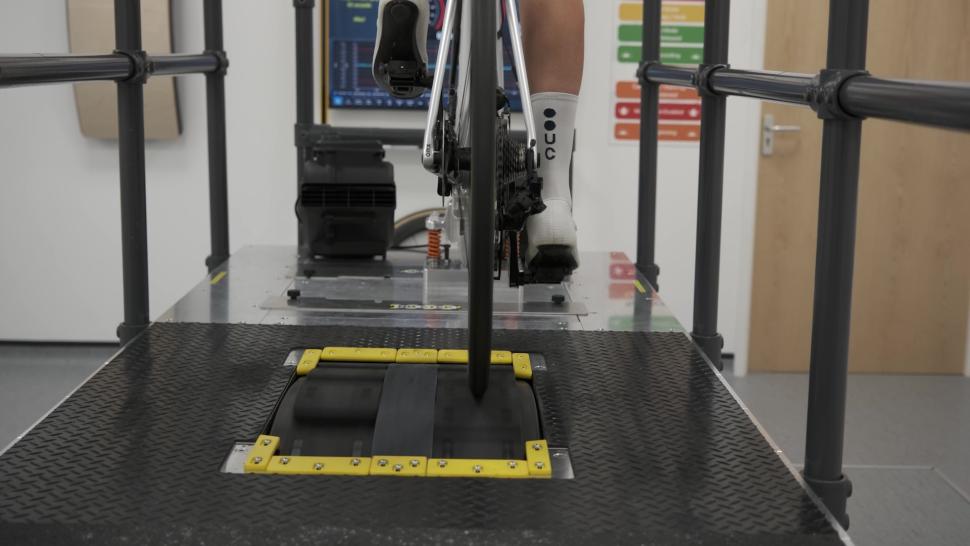
Add new comment
9 comments
"you can expect to save around 3 watts by switching from an aero bike to a climbing bike" You present it as if the loss is a constant value of 3 watts. This needs to be reported as a percentage. Is it 1% at 300 watts? Or 2% at 150 watts? That makes a BIG diffference. Also, I expect that the relationship between power and efficiency is non-linear, so you need to do the test at various power outputs and find the best-fitting curve. The difference may even disappear in certain power ranges, or reverse. I hate it when journalists pretend to be scientists.
Just to clarify, the difference was give or take 3 watts at all speeds/powers we tested. That was about 1% of total power at 40kph and just under 3% of total power at 30kph. I completely agree with your point that testing at more power outputs would help us better find the relationship between power and efficiency but chose to test on different surfaces instead.
PS: I'm an aerospace engineer pretending to be a journalist
Thanks Jamie for the clarifications, but that brings up more questions than answers - a constant absolute increase is counter-intuitive and needs more investigation to check it isn't some artefact in the testing protocol, or maybe you just happened to find this sweet spot in the non-linear relationship. I definintely respect engineers more than journalists. Also, is there any way to make the graphics larger, or allow us to click on them for the full-size version, because as it is I can't read the scales or axis labels, so they are quite useless in terms of information, they only serve as decoration like this.
Yeah. It's 99 percent about the rider anyway. I laughed when I heard the 'cool kids' banging on about how my "dinosaur" aero road bike was heading for the history books, in favour of the marketing man's wet dream 'super aero and lightweight, climber etc etc etc blah blah blah' bikes. Balls, my bike may be a few grammes heavier up the hill, but it's a lot more slippery on the down hill that follows. Ah well, this industry seemingly thrives on the easily led.
Do you have any idea of how much more slippery - which I guess you mean quicker - it is on descents than a non-aero bike?
Given your last sentence, I'm hoping that you didn't buy it based on some marketing guff about a handful of watts saved at speed.
It's a lot easier for an average rider to make a aero bike go fast on the flat than a lightweight bike climb well. You're own weight plays less of a part on the flats than it does in the hills so that's where you're average amateur is going to see bigger gains from their bike.
My frame is Bianchi CV Carbon ( Oltre XR4 ). I've ridden it, and the Specialissima CV on the same route in the same conditions. The XR4 really does need holding back on the same descents, it's markedly quicker, if I don't. The XR4 is a good 3mph average quicker at the same Normalised power, on the flat routes too, in my experience. OMMV.
If it's 99% rider the speed difference would be 0.2mph @ 20mph, not 15%.
Is this with the same wheels etc?
3mph seems wild to me when manufacturers are talking about a handful of watts at best.